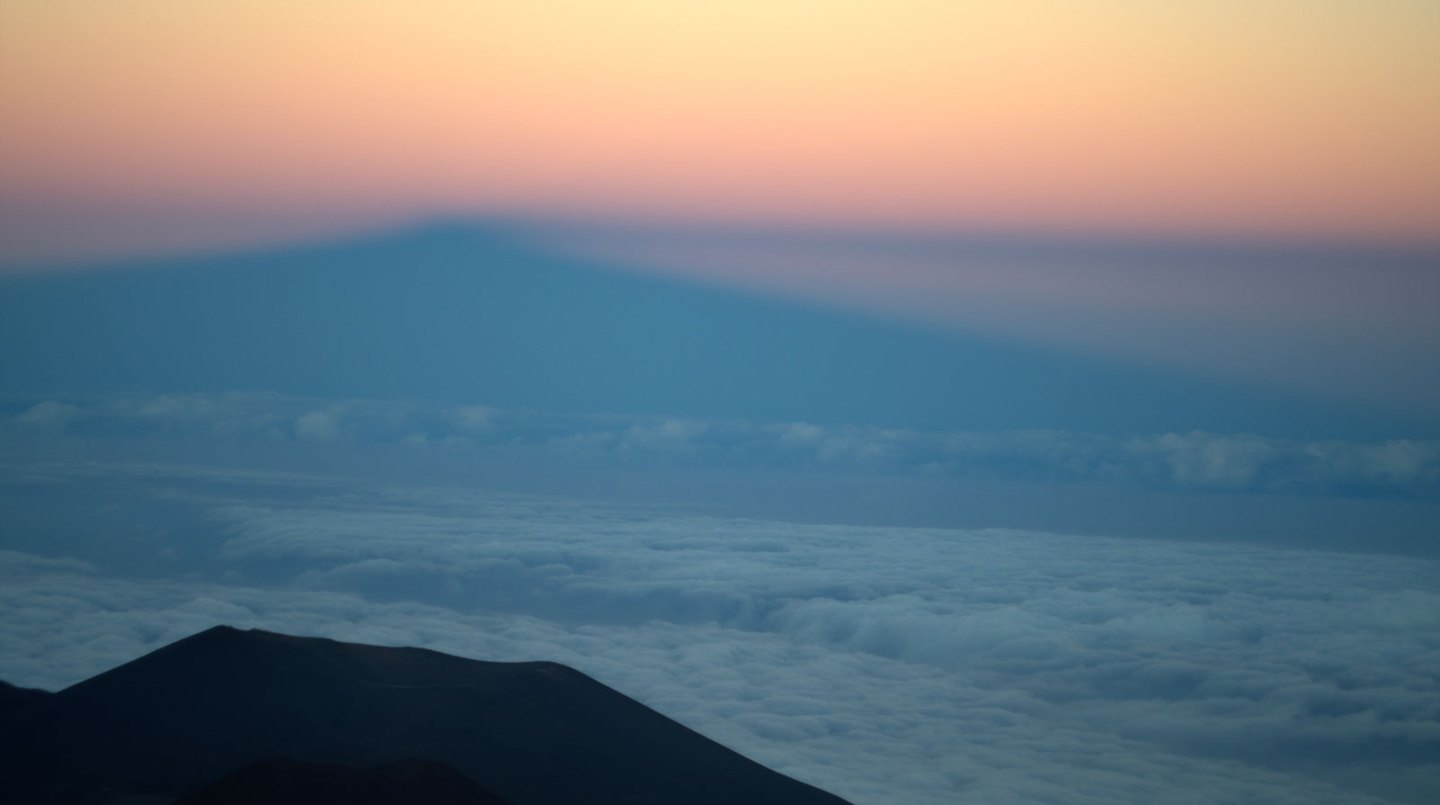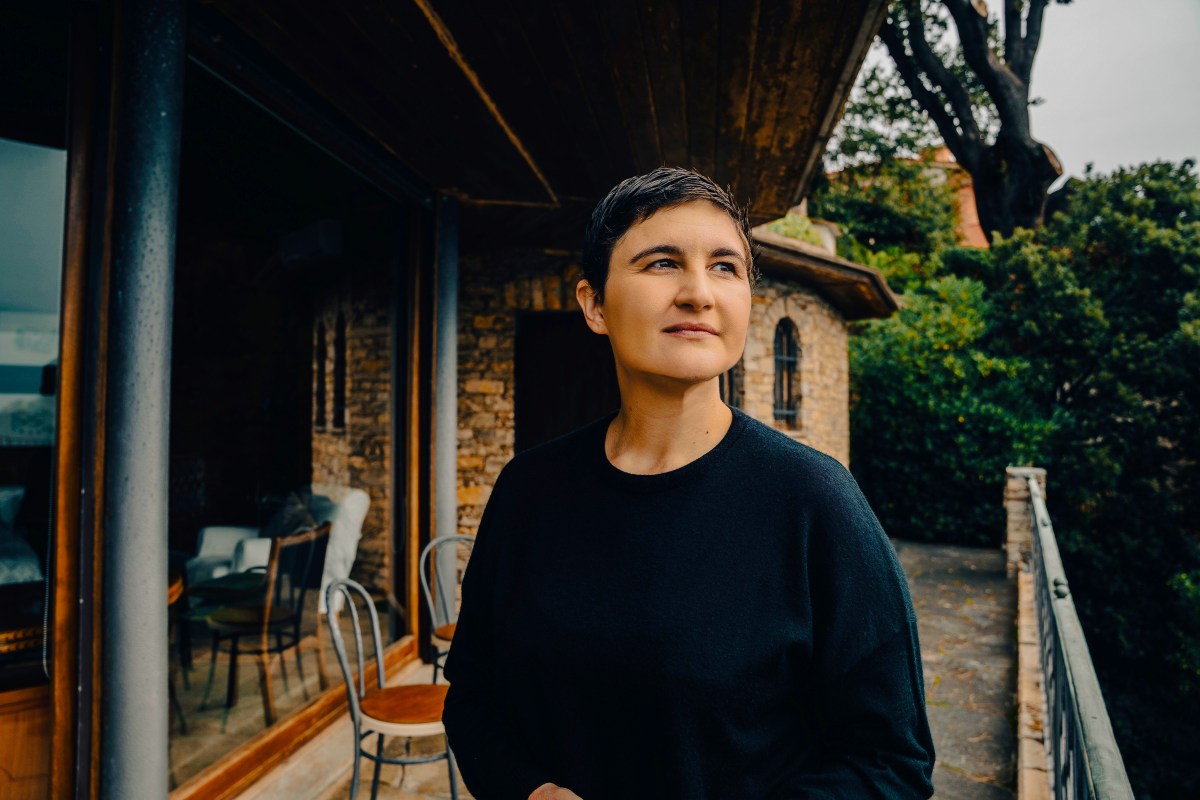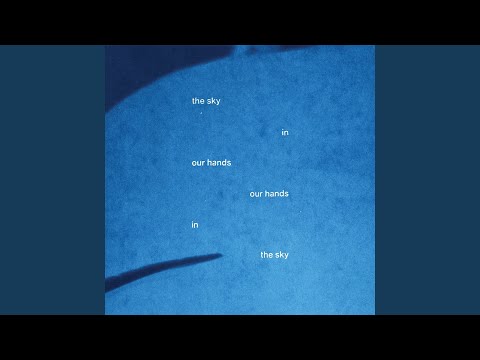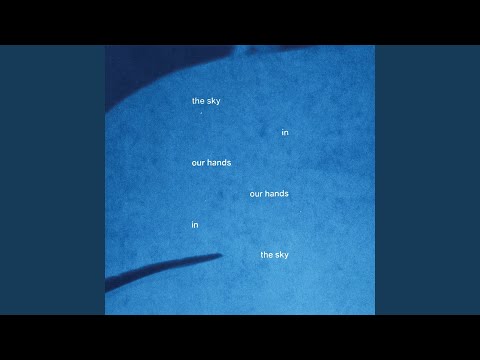A piece of clay dropping in a ceramic pot is the centerpiece of Leilehua Lanzilotti’s sound installation (single-channel video directed by Lanzilotti, cinematography by Gahlord Dewald) in the “Toshiko Takaezu: Worlds Within” exhibit at The Noguchi Museum in Queens, New York.
Lanzilotti, a 2022 Pulitzer Prize finalist in music, released their latest album, “the sky in our hands, our hands in the sky” in June. Tracks on the album—which honors ceramicist Takaezu’s work—recreate the sounds of these “clay rattles” using violin, cello, piano, and percussive instruments. Tracks in the first movement, entitled “for Toshiko,” are contemplative, filled with long pauses and silences; tracks in the second movement, entitled “sending messages,” find a sense of urgency. The final track, “the sky in our hands, our hands in the sky” is designed to mimic what it might be like to live inside one of Takaezu’s ceramic works.
Lanzilotti, a Kanaka Maoli (Native Hawaiian) composer and sound artist, embraces their Hawaiian upbringing and heritage in their work, whether that be by recreating the multisensory experience of Hawai’i or incorporating Hawaiian music, art, history, and literature into their compositions. For Lanzilotti, these works invite people to listen in new ways by paying attention to objects, people, and places that aren’t often given a voice. Their next project, “Liliʻu,” an opera that celebrates the legacy of the last Queen of Hawaiʻi, is set to be completed by 2025.
VAN: It sounds like even when you were younger, your exposure to music was influenced by both Hawaiian and Western music.
Leilehua Lanzilotti: I grew up having classical music lessons on violin and I also was in a hālau hula—a school that teaches the Hawaiian dance hula. At the time, that was still the primary place where you would be able to learn the Hawaiian language, because the language was still banned. Being in a hālau hula was not just about dancing hula, but it was also about studying the music. You had to memorize all the chants and there were quizzes about the language and what the words meant. I would say that certainly influenced my sound world a lot, because I was playing all those instruments.
In “the sky in our hands, our hands in the sky,” I’m only playing percussive things and objects. I feel empowered doing that because growing up, I had to play all those percussive Hawaiian instruments with focus and with accuracy in how they related to dancing and movement. I don’t claim to be a classically trained percussionist, but I do think that’s a really important part of the sound world that I’m interested in: the timbral and textural element of percussion as it’s used in hula.
My violin teacher when I was a little kid was Hiroko Primrose, who was the wife of William Primrose. She was a student of Shinichi Suzuki. Suzuki’s idea of learning the violin was about the sound that was around you all the time. I think some of my approach to community and music is also influenced by that.
It’s clear that crossover influences your work now. Is that intentional or a pattern you began noticing as you got older?
Maybe both. I think the idea of intuition is really interesting because we often think of intuition as different from expertise, that they’re opposites. Instead, I think that true expertise is intuition and it’s a combination of all the things that you’ve learned being synthesized. It’s even more powerful than if you’re just trying to analyze and work from expertise.
As Indigenous people in Western music, our influences are often whitewashed. We know that we have this rich heritage of experimental thinking and creative ways of approaching different materials. How can we go back to that and create new work that is radical and Indigenous to our place and contemporary?
Part of that interest in bringing these things forward is not to tokenize and not to other myself, but to say that these are real influences that we have, that are grounded in other cultural practices that are really deep. To whitewash them is to undermine the deep history of these other cultures that we’re influenced by. It puts us into a box of colonial time, where the only way to be authentically Indigenous is by performing antique Indigeneity and the only way to be modern is to be performing Western modernity. There’s nothing in between.
What does it mean to work with and collaborate with other Kanaka Maoli and Indigenous people on your upcoming opera, “Liliʻu”?
Empowering other people within our community to think creatively about how they want to manifest themselves as contemporary Indigenous people is exciting to me. I’m interested in crafting my projects so that they’re multi-layered and they have more people involved within the community, so that the conversations are not happening in a void without any other Indigenous people in the room.
It’s actually a deeper conversation about what that means to us as a group. I do my weird, experimental thing that ties back into the other kinds of work on the ground to revitalize language. Bringing language into this contemporary context means that it’s being spoken, it’s alive and it’s engaging with the problems and the celebrations that we have today as living Indigenous people. If we’re engaging with it in ways that are living, it means that the language is living, that our communities are living, and that we exist. It’s the very baseline: We still exist, we’re still here. It’s not necessarily about whether or not someone likes my music or doesn’t like my music. It’s nice that there are enough of us making different kinds of artwork in a contemporary context, that there is a dialogue.
There’s something special about having that shared language and knowledge with the people you work with. And since the libretto for the opera is written in both English and ‘Ōlelo Hawai‘i, having that sort of common ground seems significant.
The reason it’s in both languages is because the Queen was multilingual, and the entire libretto is taken from her writing. Anything that anybody sings on stage–any word that is evoked in the whole opera–are the Queen’s words. In a very, very direct way, she’s the only one that gets to speak.
For example, one of the arias is juxtaposing this letter that she wrote in English to her niece [Princess Kaiulani] while she was in prison, with her most famous song that she wrote during her imprisonment. In English, she’s writing, “I’m doing okay. This is what my daily life is like.” In Hawaiian, she’s saying, “I’m devastated, I’m imprisoned, and I’m heartbroken.” She’s also saying, “You are my hope and my support.” You–the people of Hawaii–or you–Kaiulani, the next heir. I didn’t want to just have it in English or just have it in ‘Ōlelo Hawaii. I think it’s really interesting to show that juxtaposition of the way that she was walking between these worlds and trying to give her people strength and preserve the language and do that with these songs that she was writing. But I also wanted to show what her kind of formal diplomatic voice was in English as she’s publishing these letters.
That’s interesting to me, in terms of bringing those things to life again and as a way of showing the importance of language and the importance of empowering people to speak their own native languages. It was important for me to build that into every stage and try to build it into the project from its origin, as opposed to thinking about it as an afterthought.
The latest from VAN, delivered straight to your inbox
Can you describe what the rattles and bells are? What was the process of collecting those sounds like?
At some point, Takaezu accidentally dropped a piece of clay into a ceramic vessel that she was making. After she fired it and took it out, it rattled. She loved it so much that she began to incorporate this element into her practice, intentionally wrapping small pieces of clay with paper and dropping them into closed forms before firing them. Takaezu often referred to this practice as “sending messages,” sometimes writing small messages on the paper itself, which we can never see unless they break.
Over the course of several years, I collected recordings of Takaezu’s bronze bells and ceramic closed forms at the Takaezu Foundation—her former home—in New Jersey, from private collections, and at both the Noguchi Museum and Honolulu Museum of Art. I would spend hours on my own documenting and discovering the particular physicality required to play that particular rattle.
For “the sky in our hands, our hands in the sky,” you recreated these sounds with chamber music. Where did you get the idea or inspiration to do that? How did you do it?
“for Toshiko”—one of the works on the album—explores the resonances of Takaezu’s bronze bells as translated onto violin, cello, and piano. Additionally, the second movement honors Rainforest Bell, sounded in memory of Tessa Butler, Seattle, Washington. The titles of the movements are taken from a quote by Takaezu from her Smithsonian interview in which she describes the bells in her garden and the different way she liked to interact with her works: “to see—, to touch—, to sound—.”
I enjoy translating everyday sounds onto instruments with the use of extended techniques, and I think of it as a form of listening and practicing empathy—embodying the sound and physicality required to recreate that moment, and then sharing it in space with other people. In both this practice and in using object-instruments in my work, I see this as a form of giving voice to things we don’t assume should be given a voice, or that we don’t often give voice to.

What do you mean by “giving a voice to things we don’t often give a voice to”?
For the video installation of “the sky in our hands, our hands in the sky,” I combined the recorded sounds of Takaezu’s closed forms with footage shot on the island of Hawaiʻi—at the base of Kīlauea, the slopes of Mauna Loa, and the top of Mauna Kea. On a surface level, by combining the colorscapes and sounds as related to Takaezu’s work, we get the feeling of being inside one of her multisensory sculptures.
On a deeper level, I wanted to give space for people to be together in these wahi pana—translated literally as “places with a heartbeat”—through sitting together in the installation, through the pacing of the work as it encourages people to slow down. How do we imagine a future here together? Who or what are we uplifting? Are we listening? ¶
Subscribers keep VAN running!
VAN is proud to be an independent classical music magazine thanks to our subscribers. For just over 10 cents a day, you can enjoy unlimited access to over 875 articles in our archives—and get new ones delivered straight to your inbox each week.
Not ready to commit to a full year?
You can test-drive VAN for one month for the price of a coffee.




